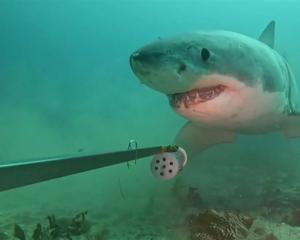
It is the second such report in March after American visitors Norbert Nigon and Virginia Schuning said they saw one on the track two weeks earlier.
Annie-Pier Bourgeois, Antoine Beauchamp and Chanel Sabourin-Dubois were on their third day on the track, on March 29, on the final stretch before returning to the carpark when they came across a large animal near the bank of the Iris Burn River.
Mr Beauchamp said the noise they were making scared the animal into the bush, but they decided to cross the track and look for it.
"That’s when we had a good look at him, and our very first instinct was to say, ‘Oh my God, that’s a moose.’
"But we didn’t think you had those here, so we tried to rationalise it and think maybe, oh, maybe it’s, I don’t know, something else."
The trio, from Quebec, had seen moose in the wild at home.
It was not a deer, nor a caribou, which they might also see at home — and this animal was "very, very tall", he said.
It was a five-hour walk back to the carpark. When they arrived, they boarded a shuttle to bring them back to Te Anau and Mr Beauchamp said the driver "jokingly" asked if they had seen a moose.
"That’s when we told her that yes, indeed, we saw a moose, and at first she didn’t, like she thought we were getting in on the joke and everything but we didn’t understand why it was something so interesting."
The driver asked a lot of questions.
"It’s so funny, the moose thing here. I really didn’t know it was a thing before hearing about it."
Moose from Canada were released in Fiordland in 1910 in the hopes of establishing a herd to hunt, but despite some occasional reports of a sighting, no official documentation exists, and Department of Conservation (Doc) Te Anau operations manager John Lucas said last month Doc believed they were most likely extinct in Fiordland.
Mr Beauchamp said he had not reported his sighting to Doc.
However, longtime New Zealand moose researcher Ken Tustin was buoyed by the second detailed account.
He said the Canadians’ report coming so soon after the American report of a moose on March 13 was "an extraordinary coincidence".
He believed a remnant moose population existed today.












